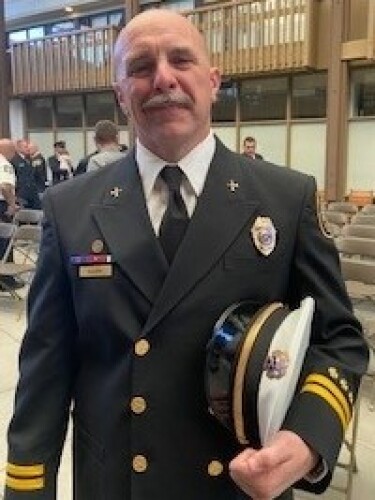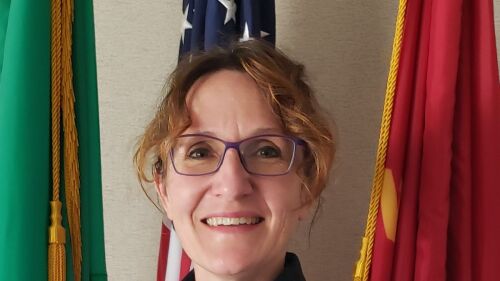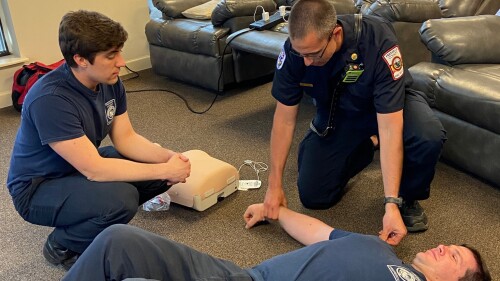The following content is part of EMS1’s EMS Leader Playbook – aimed at helping new EMS leaders increase their effectiveness, enhance their leadership KSAs, develop trust among crewmembers, and build confidence. Through a handful of questions presented by EMS1, veteran chiefs reflect on their early days in leadership roles and offer advice, while newer leaders detail their experiences taking on a new position.
Email editor@ems1.com to offer your insights for the EMS Leader Playbook or to nominate a chief to be featured.
In this installment of Chief Insights, we feature Erik Saari, battalion chief, EMS Division, Sacramento City Fire Department.
The spark: What was the incident or person in your career that put you on the path to becoming a chief ?
There were actually a few leaders and incidents that motivated me to pursue becoming a chief officer, but one dramatic event sticks out in my memory.
An assistant chief in our department, who was unfortunately representative of the apathy and antagonism of a good portion of a prior administration, made a “surprise” visit to the station where I worked. This chief had also brought a city official on this unannounced appearance, which is contrary to good leadership, all in order to put the crews out of service and belittle and berate them for submitting “too many work orders,” telling them the older station issues were their fault because they were “lazy” and “complainers.”
During this unprofessional tirade, the battalion chief, who had not been advised or invited to the event, walked into the station and witnessed the episode. He called for a full stop and demanded a conversation with the superior officer. This set off a chain of events that resulted in the exoneration of the station crews and their captains; health and safety issues for the building being addressed; and essentially breaking through the “glass ceiling” imposed by a largely ineffective and unwelcoming group of administrators.
It changed the culture and disposition of administration. From that point forward, I and my peers could see an actual positive path forward and I decided to promote and join the administration leaders who were actually striving to best serve the members and the community.
Another leader who inspired me was our former chief who was hired from a large, external fire department. This chief was a proven Leader who had come through the ranks and knew the job. But even more, he knew what awesome potential our fire department had and relocated to become a part of it. This progress required difficult conversations, tough choices and some blunt actions. The chief expected results and held all ranks and levels accountable, himself and the senior staff most of all, but in a fair, firm and consistent manner. Our chief knew that doing what was right and best for the community and the department was often not what was best for himself and his career, but he did it without hesitation. This chief was inspiring and effective. This further galvanized me and others to vigorously pursue being actual leaders as chief officers.
What’s something you wanted to accomplish in your first year as a chief?
I wanted to update our aged and ineffective MCI policies and standard operating guidelines.
This goal came through my involvement with the development of an improved strategic response for active shooter incidents, but translated to all of our MCI events. This required collaboration with all levels of the Department as well as external stakeholders such as the Local EMS Agency, our other regional Fire Departments and Law Enforcement. It is a critical topic for the Fire Service and EMS nationwide and I am happy to say that it was and continues to be well supported by leadership at all levels and groups.
Add internal promo: Learn more about Chief Saari’s active shooter approach: On-demand webinar: Trauma tenets: Evolving active shooter response
How do you create an organizational culture that people want to be a part of, to join and to stay?
As a chief officer, I was able to help establish a results-oriented culture that cared less for rank and more for solutions.
This perspective was a nebulous but critical first step in creating positive pathways for all ranks, not just officers, to contribute to the department.
For example, firefighters can now become leaders as subject matter experts (SMEs) and are utilized to evaluate our probationary firefighters’ EMS skills; teach advanced subjects; and gain access to unique opportunities, such as being SWAT medics and other recognized positions of responsibility without having a promoted rank restriction.
How do you support and stand up for your personnel, internally and externally, to show that you care about them as a person and a professional?
By listening, learning and then acting.
The fire department members have to be given access to their leaders and those leaders need to demonstrate they are hearing the needs and concerns of the department by putting those needs ahead of their own. For example, when a policy is causing chronic issues, there needs to be a review of the policy to ensure it is still relevant and justifiable. Most often, this requires work from the leader to perform research and collect information on parallel subjects for comparison. Then the leader needs to construct a new or revised policy that better serves the majority of the members, regardless of any new burdens placed on the administration of the policy. Along with that effort comes the dichotomy of leadership to engage with whatever opposition there may be to a change, to effectively communicate why the change is better despite some protests, and then to fairly and effectively implement that change.
The same can be said for equipment. A leader needs to set aside any bias or personal favorites and select what is best for the crews who will actually be using the tools.
How do you demonstrate servant leadership?
By being last.
Leaders should, without engineering or staging, establish by their actions that they will endure personal discomfort and delays for the better of the department and its members. A leader shows up on time ready to work and stays until the job is done. While this may not be the literal running into the burning building or staying at the office until midnight every night, the choices a leader makes should create a credible reputation for not quitting when things get hard and for doing things that do not benefit them directly or personally. They do their job and everyone knows it.
Leaders do not leverage their position for personal gain or comfort. They must be engaged and available to members while not disregarding practical process. A leader should follow the same rules that everyone else does.
An easy example is that as a chief officer, I do not show up unannounced to a fire station. The captain is in charge of that house and should be contacted for a request to visit. This shows the expectation and support for the company officer to have agency and authority with their crew, station and equipment.
Leadership lightning round
What is a leadership book, podcast or seminar you’ve found invaluable? “Team of Teams” by General Stanley McChrystal.
If you knew the budget request would be approved, what’s a big purchase you’d make for your department today? Community paramedic units.
These are typically Code 3 capable SUV units with an experienced firefighter/paramedic and a social worker, behavioral health specialist or advanced provider (RN, PA, etc.) who respond to psychological or social issue and get the patients the assistance and resources best suited to a positive outcome (not just a fire department ALS ambulance hauling a person to a local ED).
How do you recharge/improve your resiliency? I take small, but deliberate time off duty to remove myself from groups of people and the fire service in general to reflect, rest and recover.
Part of this is having a sustainable fitness routine that includes getting good sleep (something often ignored by younger members, including myself for most of my career).







